Discover 8 hidden attractions, cool sights, and unusual things to do in Oban (United Kingdom). Don't miss out on these must-see attractions: Dunstaffnage Castle, Dunollie Castle, and McCaig's Tower. Also, be sure to include St Columba's Cathedral in your itinerary.
Below, you can find the list of the most amazing places you should visit in Oban (Scotland).
Table of Contents
Dunstaffnage Castle
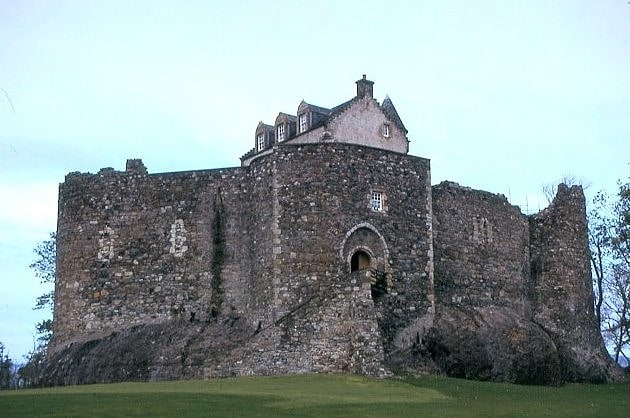
13th-century fortress of the MacDougalls. Dunstaffnage Castle is a partially ruined castle in Argyll and Bute, western Scotland. It lies 3 miles NNE of Oban, situated on a platform of conglomerate rock on a promontory at the south-west of the entrance to Loch Etive, and is surrounded on three sides by the sea. The castle and the nearby chapel ruin have been a Historic Scotland property since 1958. Both are Scheduled Ancient Monuments.
The castle dates back to the 13th century, making it one of Scotland's oldest stone castles, in a local group which includes Castle Sween and Castle Tioram. Guarding a strategic location, it was built by the MacDougall lords of Lorn, and has been held since the 15th century by the Clan Campbell. To this day there is a hereditary Captain of Dunstaffnage, although they no longer reside at the castle. Dunstaffnage is maintained by Historic Environment Scotland, and is open to the public, although the 16th century gatehouse is retained as the private property of the Captain. The prefix dun in the name means "fort" in Gaelic, while the rest of the name derives from Norse stafr-nis, "headland of the staff".[1]
Address: Kirk Rd., PA37 1PZ Dunbeg
Dunollie Castle
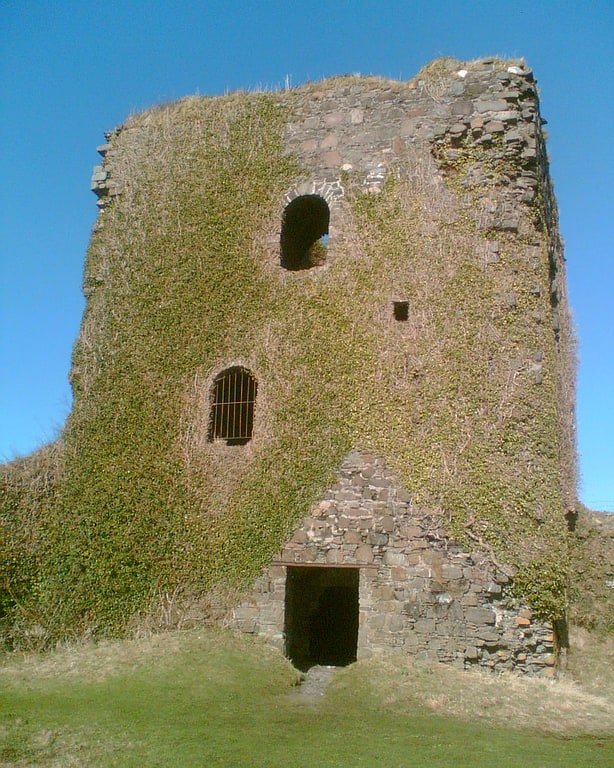
Ancient ruins of an ancestral clan home. Dunollie Castle is a small ruined castle located on a hill north of the town of Oban, on the west coast of Scotland in Argyll. The site enjoys views over towards the island of Kerrera and a view of the town, harbour, and outlying isles. The castle is open to the public as part of the Dunollie Museum, Castle and Grounds.[2]
Address: DM MacKinnon, Bank of Scotland Buildings, Oban
McCaig's Tower
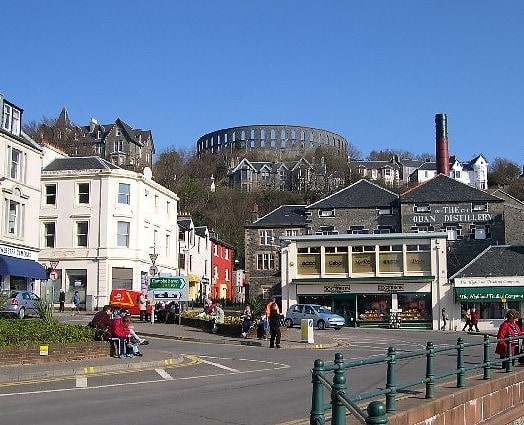
Tower in Oban, Scotland. McCaig's Tower, also known as McCaig's Folly, is a prominent tower on Battery Hill overlooking the town of Oban in Argyll, Scotland. It is built of Bonawe granite taken from the quarries across Airds Bay, on Loch Etive, from Muckairn, with a circumference of about 200 metres with two-tiers of 94 lancet arches. It is a Grade B Listed historic monument.
The structure was commissioned, at a cost of £5,000 sterling (£500,000 at 2006 prices using GDP deflator), by the wealthy, philanthropic banker (North of Scotland Bank), John Stuart McCaig.
John Stuart McCaig was his own architect. The tower was erected between 1897 and his death, aged 78 from cardiac arrest, on 29 June 1902 at John Square House in Oban.
McCaig's intention was to provide a lasting monument to his family, and provide work for the local stonemasons during the winter months. McCaig was an admirer of Roman and Greek architecture, and had planned for an elaborate structure, based on the Colosseum in Rome. His plans allowed for a museum and art gallery with a central tower to be incorporated. Inside the central tower he planned to commission statues of himself, his siblings and their parents. His death brought an end to construction with only the outer walls completed. Although his will included £1,000 per year for maintenance, the will was disputed by his heirs; their appeal to the court was successful.[3]
Address: Battery Hill, P A34 Oban
St Columba's Cathedral
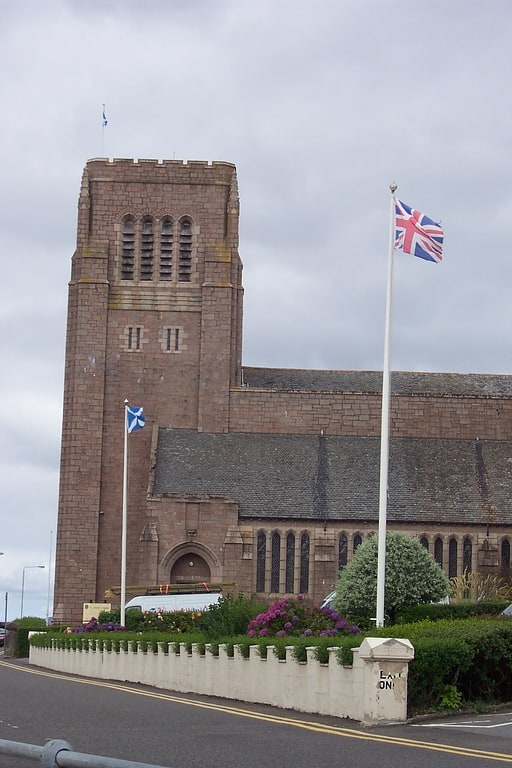
Catholic cathedral overlooking the bay. The Cathedral Church of St Columba in Oban is the seat of the Roman Catholic Bishop of Argyll and the Isles and mother church of the Diocese of Argyll and the Isles. The cathedral is located on the sea front at the northern end of Oban.[4]
Address: Corran Esplanade, PA34 5AB Oban
Falls of Lora
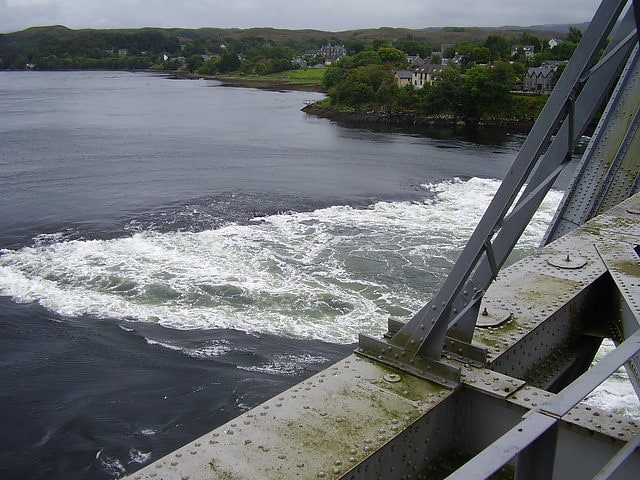
Body of water. The Falls of Lora is a tidal race which forms at the mouth of Loch Etive when a particularly high tide runs out from the loch. They form white water rapids for two to five days either side of the spring tides.
The falls of Lora are generated when the water level in the Firth of Lorn (i.e. the open sea) drops below the level of the water in Loch Etive as the tide goes out. As the seawater in Loch Etive pours out through the narrow mouth of the loch, it passes over a rocky shelf which causes the rapids to form. As the tide rises again there is a period of slack water when the levels are the same on either side. However, due to the narrow entrance to the Loch, the tide rises more quickly than the water can flow into the Loch. Thus there is still considerable turbulence at high tide caused by flow into the Loch. Thus, unlike most situations where slack water is at high and low tides, in the case of the Falls of Lora slack water occurs when the levels on either side are the same, not when the tidal change is at its least. As a result, the tidal range is much greater on the coast than it is inside the loch. A 3 metres (9.8 ft) range at Oban may produce only a 1.3 metres (4.3 ft) range at Bonawe on the loch shore.
The loch mouth is spanned by Connel Bridge.
The race is popular with white water kayakers and divers as well as tourists and photographers.[5]
Address: Firth of Lorn, Oban
St John's Cathedral
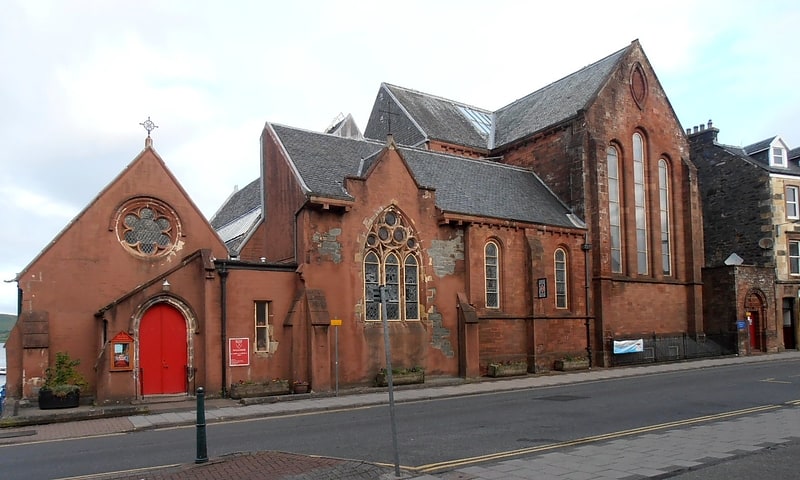
Cathedral in Oban, Scotland. St John's Cathedral or the Cathedral Church of St John the Divine is a cathedral of the Scottish Episcopal Church, located in the town of Oban. It is one of the two cathedrals of the Diocese of Argyll and The Isles, and one of the sees of the Bishop of Argyll and The Isles.
The MacDougalls of Dunollie and Campbells of Dunstaffnage began the project to build an episcopal church in Oban in 1846. The first church was completed in 1864. The committee for the erection of the church appointed Charles Wilson as the architect, but following his death, the work was entrusted to his successor, David Thomson of the architectural practice Heath Wilson & David Thomson, Glasgow. As the Bishop of Argyll and The Isles Dr. Alexander Ewing was in Europe on account of his health, the church was consecrated by the Bishop of London Rt. Revd Archibald Campbell Tait on Thursday 22 September 1864. It was described as being of small dimensions, consisting only of a nave and chancel, the total length being 61 feet (19 m) inside. The east window was filled with painted glass and donated by Sir Donald Campbell, 3rd Baronet of Dunstaffnage in memory of his brother Sir Angus. The rose window in the western gable was filled with painted glass, the gift of David Hutcheson. The contractors for the building were John McCorquodale for masonry, Andrew Fairgrieve for plumbing, Hugh Brown for slating, George McAlpine for plastering, Charles McLaren for glazing, R. Reguson & Sons for painting, and G. Smith & Co for ironwork. The cost of the first phase of the building was around £1,400 (equivalent to £140,700 in 2020).
In 1882 a side aisle was added to the south of the 1864 building. The 1910 additions were by architect James Chalmers of Glasgow. Funds ran out before construction finished – thus we are left with a unique Cathedral (designated as such in 1920) with each phase clearly visible in the Cathedral you see today and the steel girders still supporting the incomplete vision of a grand structure.
A screen was added in 1958 designed by Ian Gordon Lindsay.[6]
Address: George Street, PA34 5QE Oban
Oban Distillery
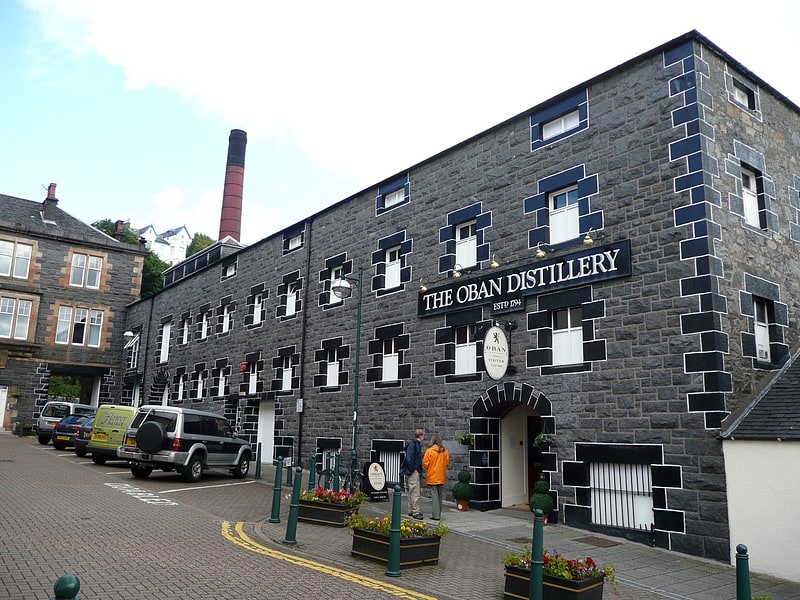
Oban distillery is a whisky distillery in the Scottish west coast port of Oban. Established in 1794, it was built before the town of the same name, which sprung up later in the surrounding craggy harbour.
Oban distillery is owned by Diageo. It has only two pot stills, making it one of the smallest in Scotland, producing a whisky that has been described as having a "West Highland" flavour that falls between the dry, smoky style of the Scottish islands and the lighter, sweeter malts of the Highlands.[7]
Address: Stafford St, PA34 5NH Oban
Argos

Shopping, Department store
Address: Unit 2, Lochavullin Drive, Lochavullin Industrial Estate, Oban